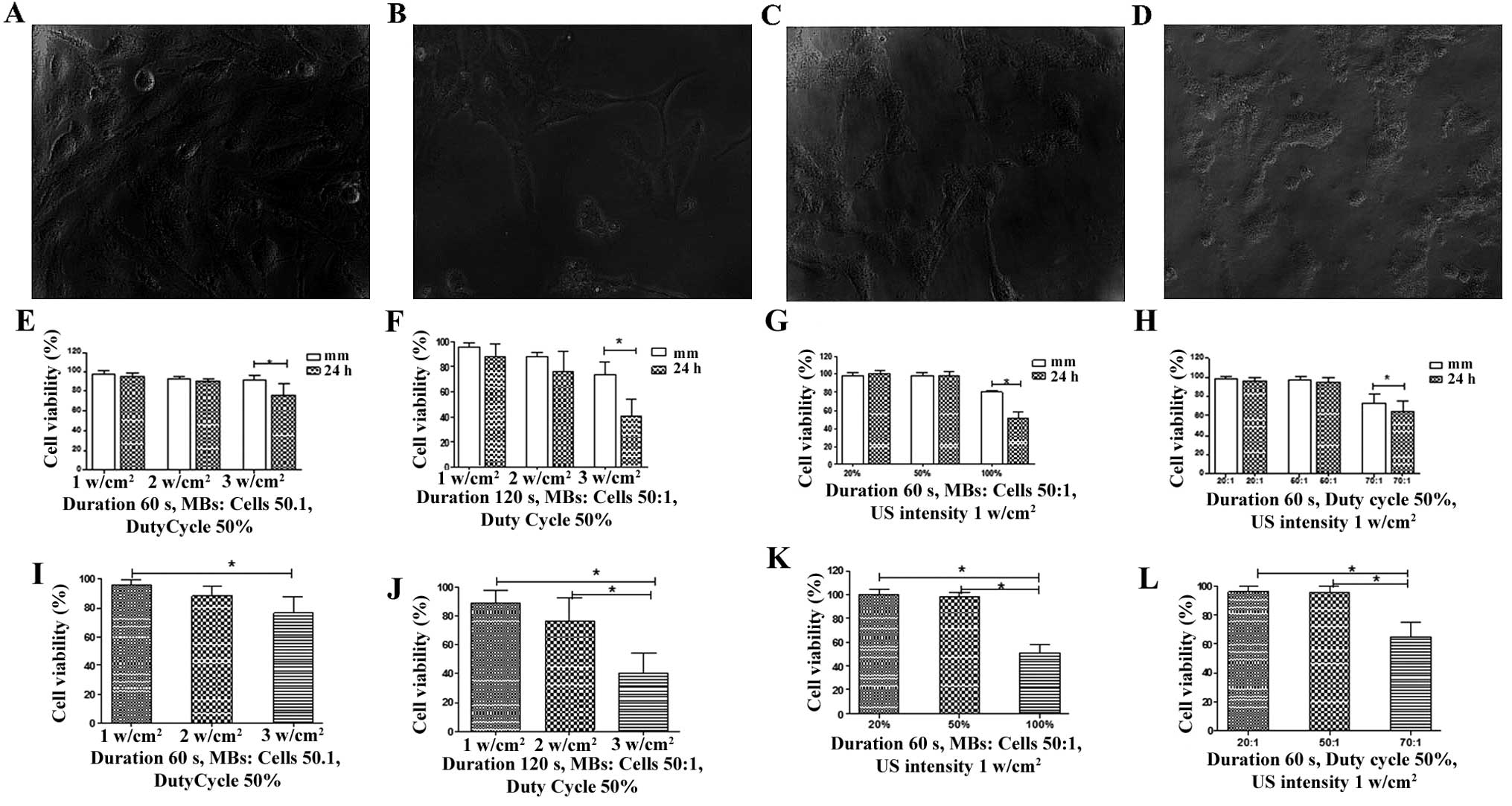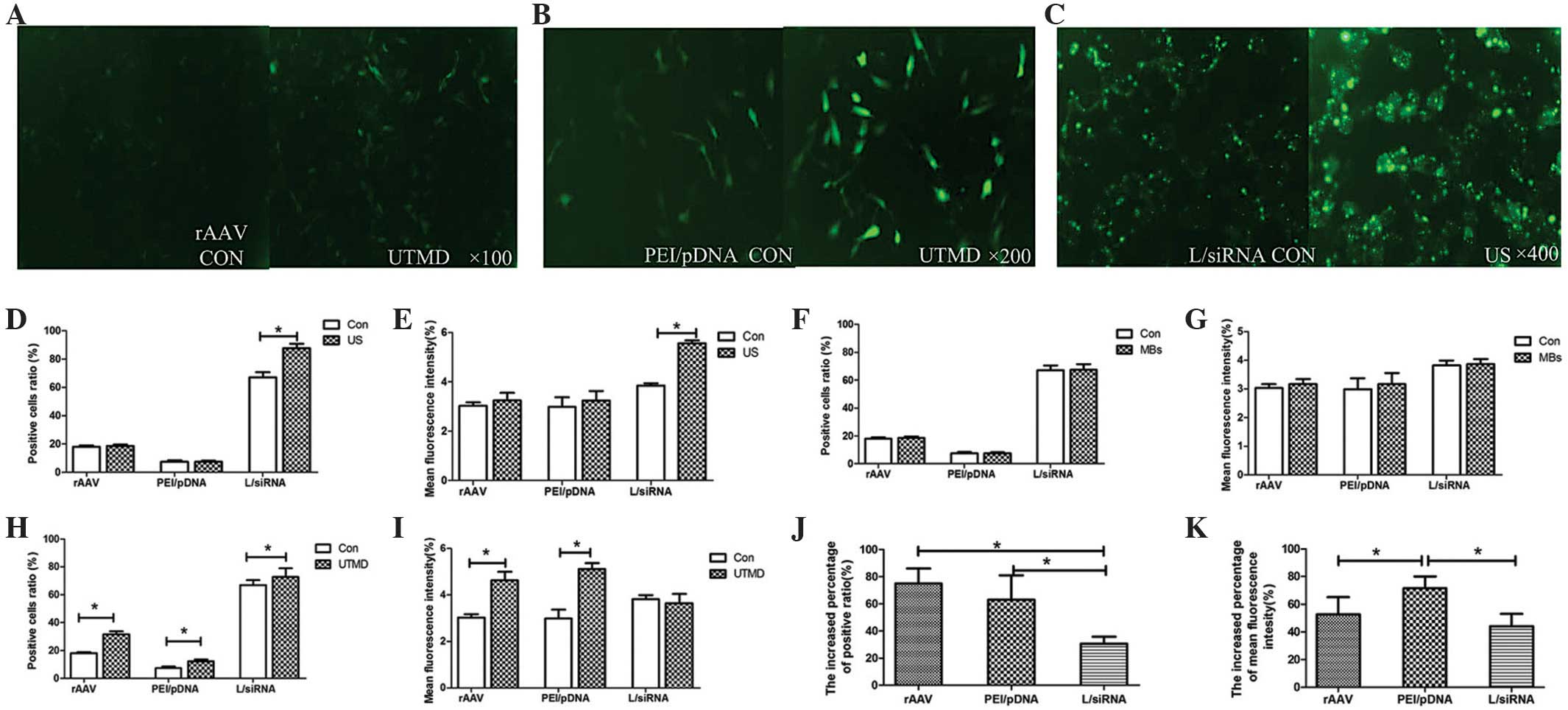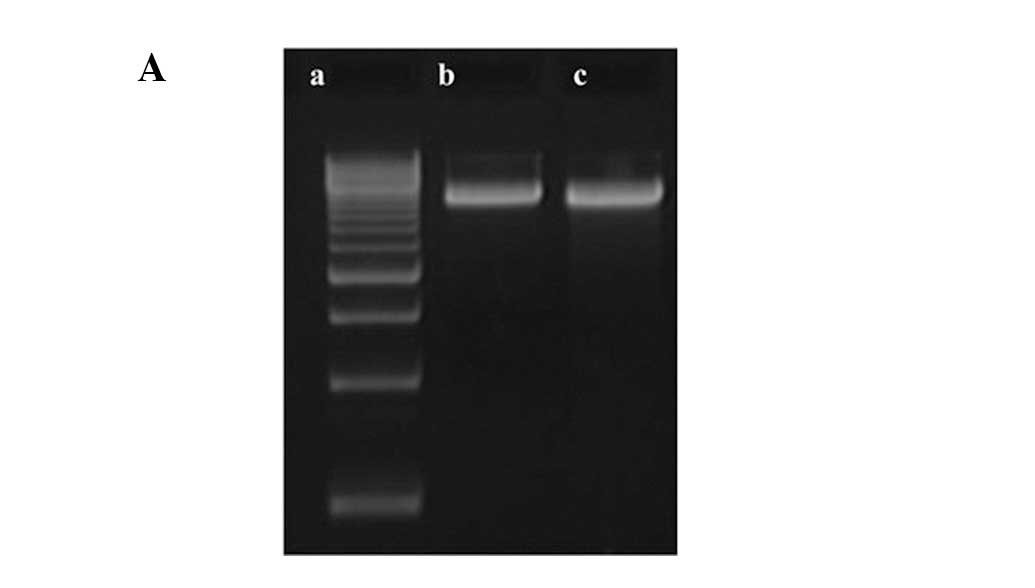|
1
|
Algvere PV, Berglin L, Gouras P and Sheng
Y: Transplantation of fetal retinal pigment epithelium in
age-related macular degeneration with subfoveal neovascularization.
Graefes Arch Clin Exp Ophthalmol. 232:707–716. 1994. View Article : Google Scholar : PubMed/NCBI
|
|
2
|
Li LX and Turner JE: Inherited retinal
dystrophy in the RCS rat: prevention of photoreceptor degeneration
by pigment epithelial cell transplantation. Exp Eye Res.
47:911–917. 1988. View Article : Google Scholar : PubMed/NCBI
|
|
3
|
Sunshine JC, Sunshine SB, Bhutto I, Handa
JT and Green JJ: Poly(β-amino ester)-nanoparticle mediated
transfection of retinal pigment epithelial cells in vitro and in
vivo. PLoS One. 7:e375432012. View Article : Google Scholar
|
|
4
|
del Pozo-Rodriguez A, Delgado D, Solinis
MA, Gascón AR and Pedraz JL: Solid lipid nanoparticles for retinal
gene therapy: transfection and intracellular trafficking in RPE
cells. Int J Pharm. 360:177–183. 2008. View Article : Google Scholar : PubMed/NCBI
|
|
5
|
Urtti A, Polansky J, Lui GM and Szoka FC:
Gene delivery and expression in human retinal pigment epithelial
cells: effects of synthetic carriers, serum, extracellular matrix
and viral promoters. J Drug Target. 7:413–421. 2000. View Article : Google Scholar : PubMed/NCBI
|
|
6
|
Abul-Hassan K, Walmsley R and Boulton M:
Optimization of non-viral gene transfer to human primary retinal
pigment epithelial cells. Curr Eye Res. 20:361–366. 2000.
View Article : Google Scholar : PubMed/NCBI
|
|
7
|
Fechheimer M, Boylan JF, Parker S, Sisken
JE, Patel GL and Zimmer SG: Transfection of mammalian cells With
plasmid DNA by scrape loading and sonication loading. Proc Natl
Acad Sci USA. 84:8463–8467. 1987. View Article : Google Scholar : PubMed/NCBI
|
|
8
|
Zhou XY, Liao Q, Pu YM, Tang YQ, Gong X,
Li J, Xu Y and Wang ZG: Ultrasound-mediated microbubble delivery of
pigment epithelium-derived factor gene into retina inhibits
choroidal neovascularization. Chin Med J. 22:2711–2717. 2009.
|
|
9
|
Sonoda S, Tachibana K, Yamashita T,
Shirasawa M, Terasaki H, Uchino E, Suzuki R, Maruyama K and
Sakamoto T: Selective gene transfer to the retina using
intravitreal ultrasound irradiation. J Ophthalmol.
12:4127522012.
|
|
10
|
Sanders NN, Peeters L, Lentacker I,
Demeester J and De Smedt SC: Wanted and unwanted properties of
surface PEGylated nucleic acid nanoparticles in ocular gene
transfer. J Control Release. 122:226–235. 2007. View Article : Google Scholar : PubMed/NCBI
|
|
11
|
Xie W, Liu S, Su H, Wang Z, Zheng Y and Fu
Y: Ultrasound microbubbles enhance recombinant adeno-associated
virus vector delivery to retinal ganglion cells in vivo. Acad
Radiol. 17:1242–1248. 2010. View Article : Google Scholar : PubMed/NCBI
|
|
12
|
Li HL, Zheng XZ, Wang HP, Li F, Wu Y and
Du LF: Ultrasound-targeted microbubble destruction enhances
AAV-mediated gene transfection in human RPE cells in vitro and rat
retina in vivo. Gene Ther. 16:1146–1153. 2009. View Article : Google Scholar : PubMed/NCBI
|
|
13
|
Zheng XZ, Wu Y, Li HL, Du LF, Wang HP and
Gu Q: Comparative analysis of the effects of ultrasound-targeted
microbubble destruction on recombinant adeno-associated virus- and
plasmid-mediated transgene expression in human retinal pigment
epithelium cells. Mol Med Rep. 2:937–942. 2009.PubMed/NCBI
|
|
14
|
Zheng XZ, Li HL, Du LF, Wang HP and Gu Q:
Comparative analysis of gene transfer to human and rat retinal
pigment epithelium cell line by a combinatorial use of recombinant
adeno-associated virus and ultrasound or/and microbubbles. Bosn J
Basic Med Sci. 9:174–181. 2009.PubMed/NCBI
|
|
15
|
Mannermaa E, Rönkkö S, Ruponen M,
Reinisalo M and Urtti A: Long-lasting secretion of transgene
product from differentiated and filter-grown retinal pigment
epithelial cells after nonviral gene transfer. Curr Eye Res.
30:345–353. 2005. View Article : Google Scholar : PubMed/NCBI
|
|
16
|
Müller OJ, Schinkel S, Kleinschmidt JA,
Katus HA and Bekeredjian R: Augmentation of AAV-mediated cardiac
gene transfer after systemic administration in adult rats. Gene
Ther. 15:1558–1565. 2008. View Article : Google Scholar : PubMed/NCBI
|
|
17
|
Zhang CB, Cao HL, Li Q, Tu J, Guo X, Liu Z
and Zhang D: Enhancement effect of ultrasound-induced microbubble
cavitation on branched polyethylenimine-mediated VEGF (165)
transfection with varied N/P ratio. Ultrasound Med Biol.
39:161–171. 2013. View Article : Google Scholar
|
|
18
|
Afadzi M, Strand SP, Nilssen EA, Måsøy SE,
Johansen TF, Hansen R, Angelsen BA and de Davies LC: Mechanisms of
the ultrasound-mediated intracellular delivery of liposomes and
dextrans. IEEE Trans Utrason Ferroelectr Freq Control. 60:21–33.
2013.
|
|
19
|
Geers B, Lentacker I, Alonso A, Sanders
NN, Demeester J, Meairs S and De Smedt SC: Elucidating the
mechanisms behind sonoporation with adeno-associated virus-loaded
microbubbles. Mol Pharm. 8:2244–2251. 2011. View Article : Google Scholar : PubMed/NCBI
|
|
20
|
Lee JL, Lo CW, Ka SM, Chen A and Chen WS:
Prolonging the expression duration of ultrasound-mediated gene
transfection using PEI nanoparticles. J Control Release. 160:64–71.
2012. View Article : Google Scholar : PubMed/NCBI
|
|
21
|
Juffermans LJ, Meijering BD, Henning RH
and Deelman LE: Ultrasound and microbubble-targeted delivery of
small interfering RNA into primary endothelial cells is more
effective than delivery of plasmid DNA. Ultrasound Med Biol.
40:532–40. 2014. View Article : Google Scholar
|
|
22
|
Wang X, Liang HD, Dong B, Lu QL and
Blomley MJ: Gene transfer with microbubble ultrasound and plasmid
DNA into skeletal muscle of mice: comparison between commercially
available microbubble contrast agents. Radiology. 237:224–229.
2005. View Article : Google Scholar : PubMed/NCBI
|
|
23
|
Okada K, Kudo N, Niwa K and Yamamoto K: A
basic study on sonoporation with microbubbles exposed to pulsed
ultrasound. J Med Ultrasonics. 32:3–11. 2005. View Article : Google Scholar
|
|
24
|
Haensler J and Szoka FC Jr: Polyamidoamine
cascade polymers mediate efficient transfection of cells in
culture. Bioconjug Chem. 4:372–379. 1993. View Article : Google Scholar : PubMed/NCBI
|
|
25
|
Laitinen M, Zachary I, Breier G, et al:
VEGF gene transfer reduces intimal thickening via increased
production of nitric oxide in carotid arteries. Hum Gene Ther.
8:1737–1744. 1997. View Article : Google Scholar : PubMed/NCBI
|

















